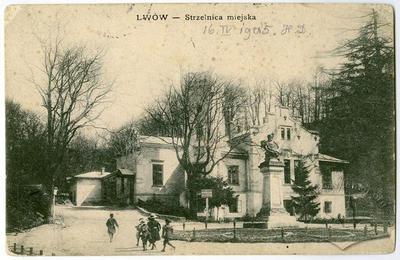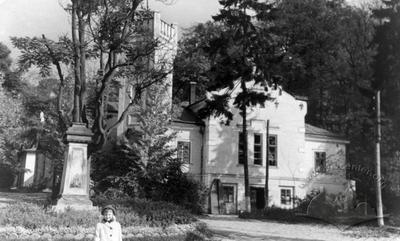Vul. Lysenka – Stara Strilnytsia Park
A small park in the city center, not far from the foot of Vysokyi Zamok, between Lysenko and Barvinskyi Streets on the northern slopes of Stephan Hill. Established in 1775 on a territory set aside by the City Council for the city’s rifle society, known as the “Kurkov (eng., Rifle Hammer) Brotherhood”, to conduct shooting practice. The territory was arranged as a botanical garden by Professor Ernst Bittman in 1823. In 1890 it was reconfigured into a public park.
Architecture
Stara Strilnytsia Park is located east of the city center and south of Vysokyi Zamok. It occupies the parcel of land located between Lysenko and Barvinskyi Streets on the southern flank of Stephan Hill, a low hill between Zamkova and Zmieva. The terrain made the location ideal for a picturesque park accessible just through the gates of #23 Lysenko Street.
Ernst Wittman laid out the botanical garden on the territory in 1823, with the subsequent reconfiguration into a city park coming in 1890. Winding paths climb the park hill to Barvinskyi Street, which divides the Vysokyi Zamok from Znessinya Park.
Stara Strylnytsia Park forms part of the eastern segment of Lviv’s Vysokyi Zamok-Lonshanivka-Tsetnerivka-Pohulianka garden ring.
Personalities
Leon Bratkowski – merchant,
urban activist
Ernst Wittmann – botanist
Jozef Engel – architect
Zygmunt
Stankiewicz – engineer, regional ethnographer
Franz
Trescher – architect
Sources
- Barański, F. Przewodnik po Lwowie: Z planem i widokami Lwowa. Lwów: 1902.
- Jaworski, F. Lwόw stary i wczorajszy (szkice i opowiadania): Z ilustracyami. Wydanie drugie poprawione. Lwów: 1911.
- Miasto Lwów w okresie samorządu 1870-1895. Lwów: 1896.
- Orłowicz, M. Ilustrowany przewodnik po Lwowie: Ze 102 ilustracjami i planem miasta. Wydanie drugie rozszerzone. Lwów – Warszawa: Książnica-Atlas, 1925.
- Stankiewicz, Z. „Ogrody i plantacje miejskie”. Lwów dawny i dzisiejszy: Praca zbiorowa pod redakcja B. Janusza. Lwów: 1928, p. 62–71.
Material compiled by Ihor Zhuk, december 2012
Media Archive Materials
Related Pictures










